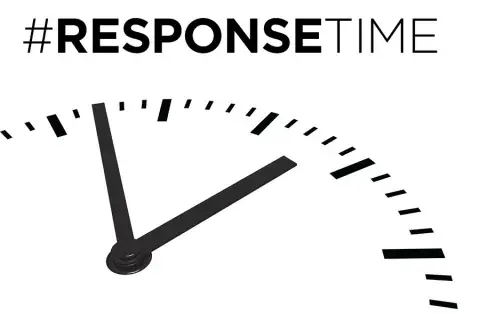Dynatrace, a leading company in the application performance management field states that the average loading site for a website has increased over the years instead of decreasing, as previously expected.
Websites are getting slower, not faster
On average, websites are 7% slower than last year and this figure is growing fast. This phenomenon is especially prevalent in developed countries and it’s currently driving conversion rates down by up to 22%.
The reasons behind this phenomenon seems to be complex design trends implemented by both agencies and freelancers in the developed world. Dynatrace tested over 300 leading websites based in the USA, Australia, Spain, France, Germany and in the UK for the past 12 months. These response tests were done every 10 minutes for the past year and the figures are staggering.
Slower websites, lower sales
Other research related to website loading time states that 90% of users expect their website to load in three seconds or less. A whopping 46% of these users will abandon their page if it takes longer than 3 seconds to load. As such, it’s extremely important to have a fast-loading web page as this can also have an impact on your revenues.
Dave Anderson from Dynatrace states: “While lags in performance are concerning, they also present a big opportunity to measure response times more closely and link it back to revenue. Take a leaf out of Nordstrom’s book – it has measured that a mere 0.5 second slow-down in site load time equates to an 11% reduction in site conversion. This is precisely where retailers need to focus internal conversations: looking at site performance and how it impacts revenue.”
And the opposite is true as well – increase your website speed by just one second and your conversion rate will get a 22% boost!
Websites from the Scandinavian countries and from China made improvements over the past year but they are still far from countries such as the US or UK. France had a 20% speed increase over the last year, moving to the second place in the world, close behind Spain.
Last year, the UK boasted the world’s fastest websites but in 2016 moved into third place. Australia currently has the slowest websites in the western world with an average of 8.2 seconds loading time. It remains to be seen if this shift will have repercussions on their economy overall.
|
Country |
2015 response times |
2016 response times |
% change in homepage response times (2015 – 2016) |
% change in average no. of third party hosts (2015 – 2016) |
% change in average no. objects (2015 – 2016) |
% change in average page size (2015 – 2016) |
|
Global |
4.2 secs |
4.5 secs |
+7.14% |
+18% |
+7% |
+8% |
|
Spain |
3.1secs |
3.3 secs |
+6.45% |
-5% |
+5% |
-13% |
|
France |
4.4 secs |
3.5 secs |
-20.45% |
+20% |
+15% |
+25% |
|
United Kingdom |
2.9 secs |
3.7 secs |
+27.59% |
+22% |
+15% |
+18% |
|
United States |
3.4 secs |
3.9 secs |
+14.70% |
+12% |
+7% |
+5% |
|
Germany |
3.7 secs |
4.3 secs |
+16.21% |
+5% |
+8% |
+18% |
|
Norden |
5.2 secs |
4.4 secs |
-15.38% |
+16% |
-17% |
+5% |
|
China |
5.8 secs |
4.9 secs |
-15.52% |
+15% |
+7% |
+18% |
|
Australia |
5.4 secs |
8.2 secs |
+51.85% |
+27% |
+13% |
+6% |
In 2016 most designers integrated complex design schemes into their projects. Most of these included a large number of interactive objects, bigger images and video. Dynatrace uses Apple’s website as a best-practice example. Apple’s websites are some of the fastest in the world without limiting user experience in any way or form.
Keeping it simple works
When it comes to websites, the old saying „less is more” applies perfectly and bigger isn’t always better. A smaller number of objects, smaller pages and optimized images can not only improve your overall user experience, but your revenue as well. Considering these factors, optimizing your website’s speed is well worth the investment.








